On June 6, during his official visit to Estonia, Vietnamese Prime Minister Pham Minh Chinh held bilateral talks with Estonian Prime Minister Kristen Michal in what was hailed as a historic meeting - the first high-level Vietnamese visit to Estonia since the two countries established diplomatic ties in 1992.
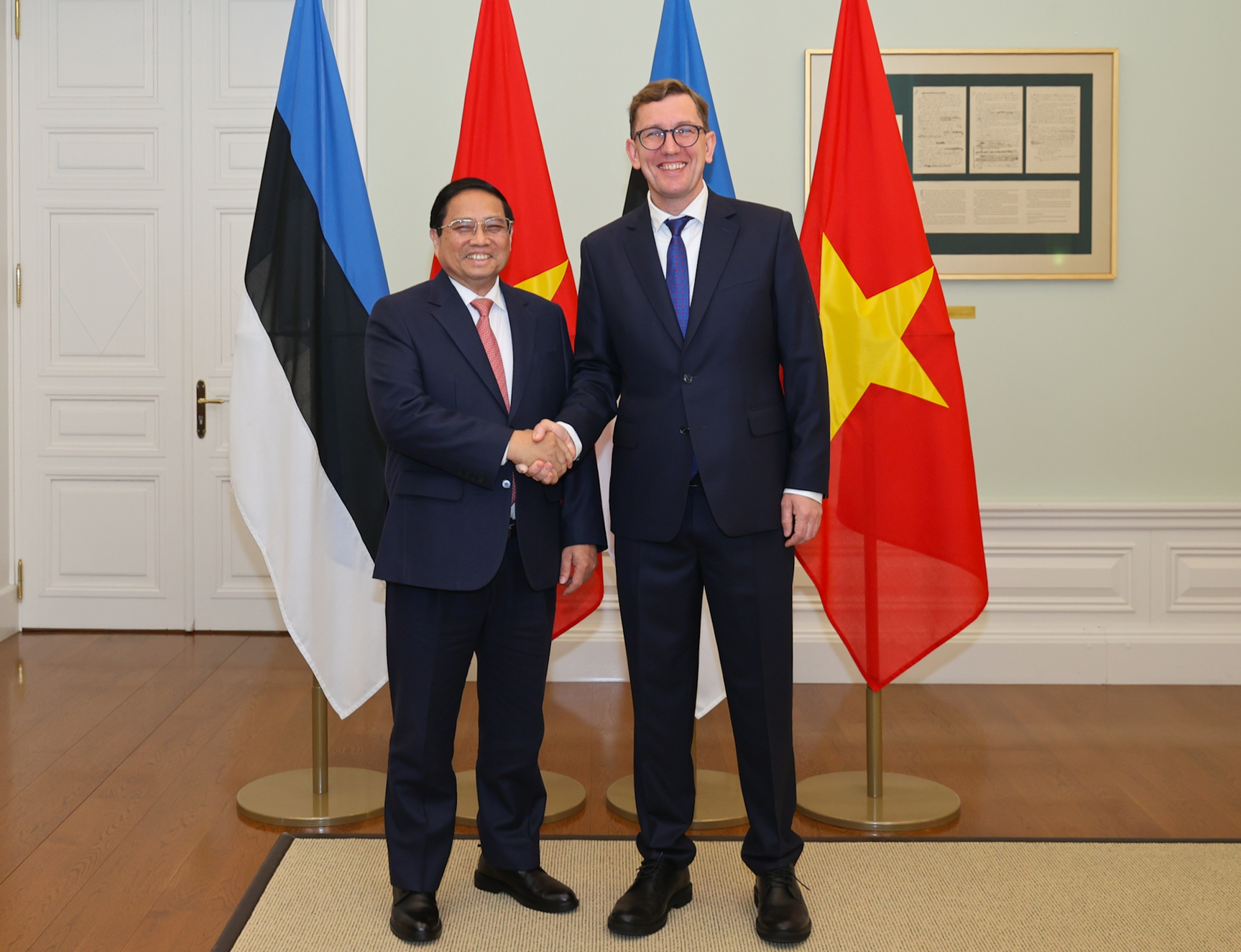
Prime Minister Michal warmly welcomed his Vietnamese counterpart, describing the visit as a new milestone that would deepen bilateral ties and expand cooperation in areas of mutual strength and interest.
Prime Minister Pham Minh Chinh expressed his delight at visiting Estonia - a beautiful, hospitable country and a European model in innovation, digital governance, and entrepreneurship. He extended greetings from General Secretary To Lam, President Luong Cuong, and National Assembly Chairman Tran Thanh Man to Estonian leaders, emphasizing Vietnam’s appreciation for Estonia’s past and ongoing support during the nation’s development.
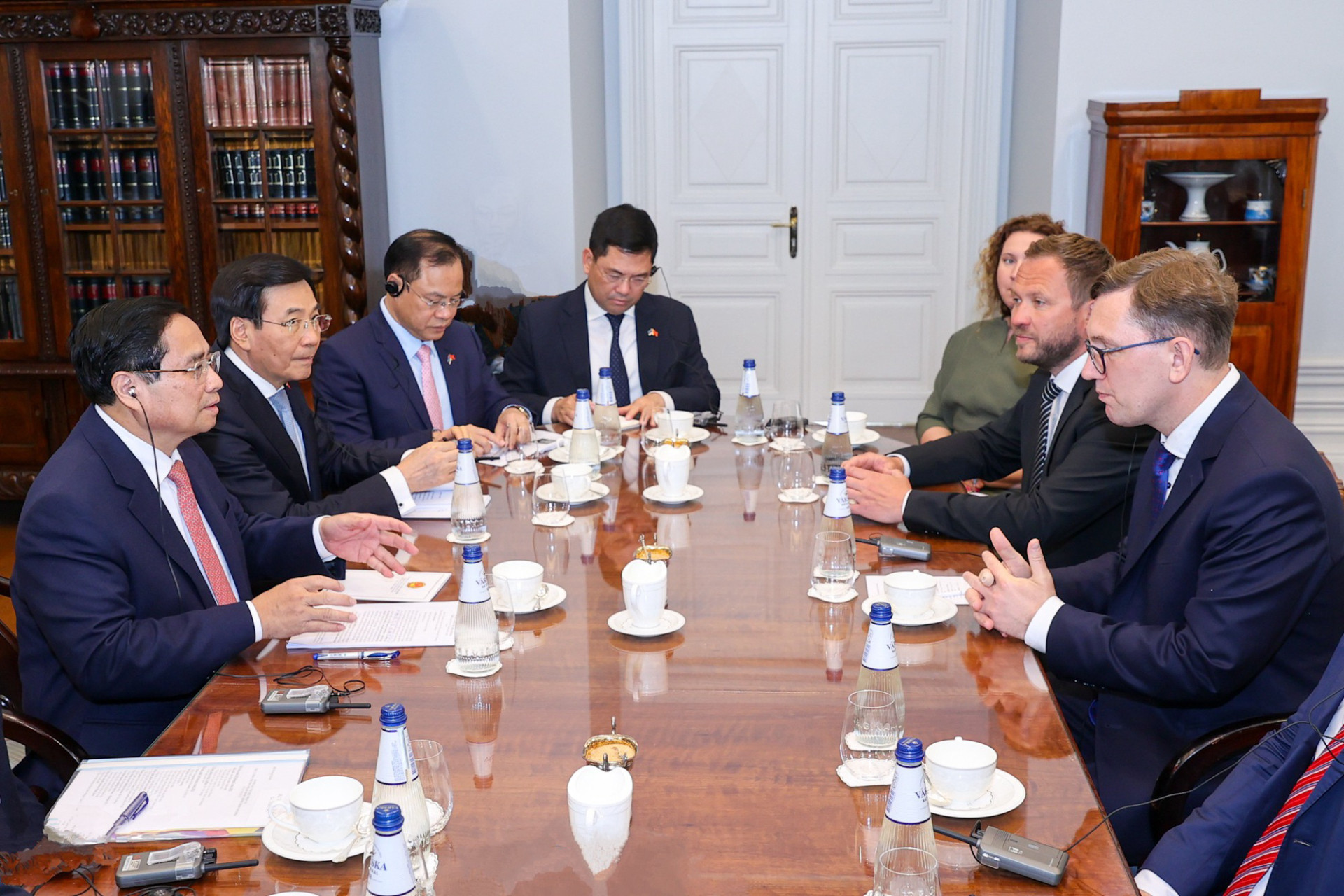
In light of profound global and regional changes, both leaders agreed on the importance of renewing traditional Vietnam-Estonia relations for the benefit of both peoples and for peace and development worldwide.
Prime Minister Chinh emphasized Vietnam’s commitment to institutional reform, infrastructure development, and human resources - especially science, technology, innovation, and digital transformation - as key drivers of its modern development strategy.
Impressed by Estonia’s global leadership in digital transformation and e-governance, he proposed stronger cooperation in digital infrastructure, e-government, large-scale data centers, and high-quality human resource development. He expressed hopes these efforts would help improve public services and drive sustainable socioeconomic development in Vietnam.

Prime Minister Kristen Michal praised Vietnam’s achievements in improving people’s lives and acknowledged its progress in digital governance. He affirmed Estonia’s readiness to work closely with Vietnam across various fields, especially in digital transformation, innovation, science and technology, cybersecurity, artificial intelligence, and education.
Both leaders affirmed the importance of mutual support and development, agreeing to enhance political exchanges and broaden cooperation across sectors.
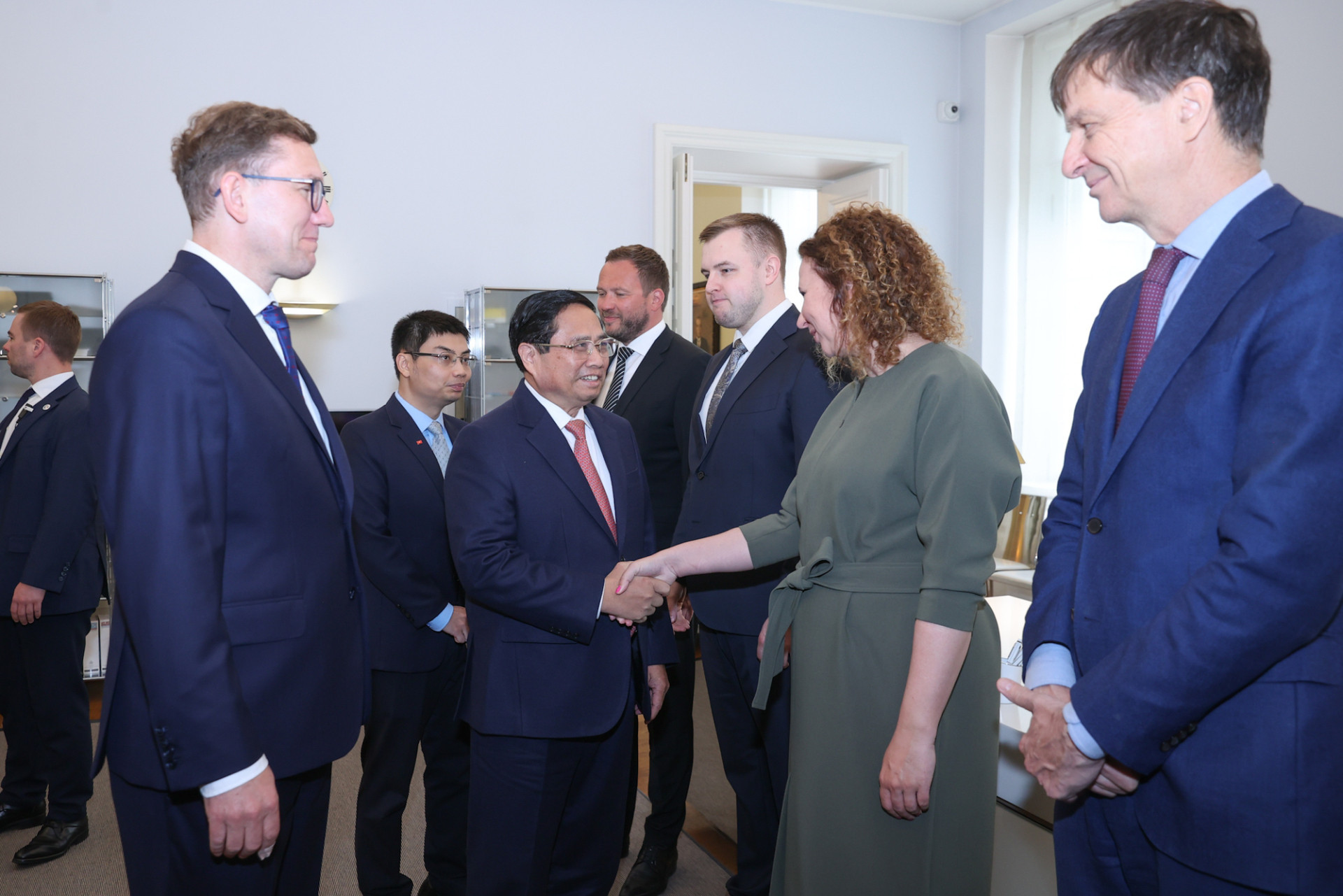
Prime Minister Kristen Michal introduces Estonian officials. Photo: VGP/Nhat Bac
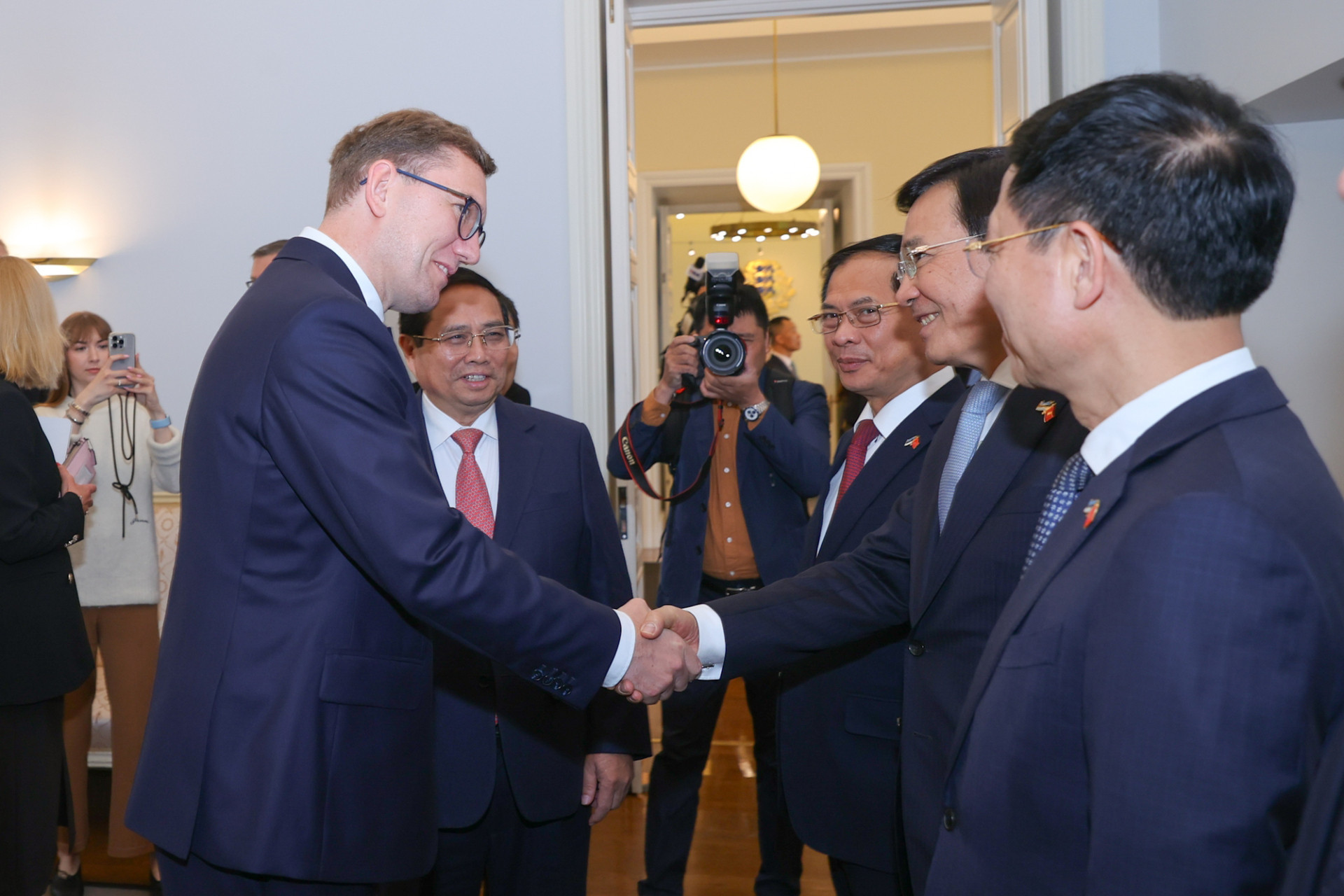
On economic and trade matters, they agreed to facilitate business operations and investments in each country. Prime Minister Chinh expressed hope that Estonia could serve as a strategic bridge for Vietnamese exports into Northern Europe and the EU.
They also supported enhanced people-to-people exchanges through tourism and cultural events and agreed to create favorable conditions for the Vietnamese community in Estonia to contribute to both countries’ development and bilateral relations.
On international and regional issues, both sides supported free trade, multilateral reform, and legal principles in accordance with the UN Charter. They pledged close coordination and mutual support at multilateral forums such as the UN and ASEAN–EU.
On maritime issues, including the East Sea, both parties reaffirmed their support for freedom of navigation and overflight based on international law, especially the 1982 United Nations Convention on the Law of the Sea (UNCLOS), emphasizing peaceful dispute resolution without the use or threat of force.
On this occasion, Prime Minister Chinh invited Estonia to send a high-level delegation to Hanoi in October 2025 for the signing of the UN Convention on Cybercrime, hosted by Vietnam. He also extended an invitation to Prime Minister Michal to visit Vietnam, which was gladly accepted.
At the end of the talks, the two leaders witnessed the signing of two memorandums of understanding: one on political-diplomatic cooperation between the ministries of foreign affairs, and another on digital and economic transformation.
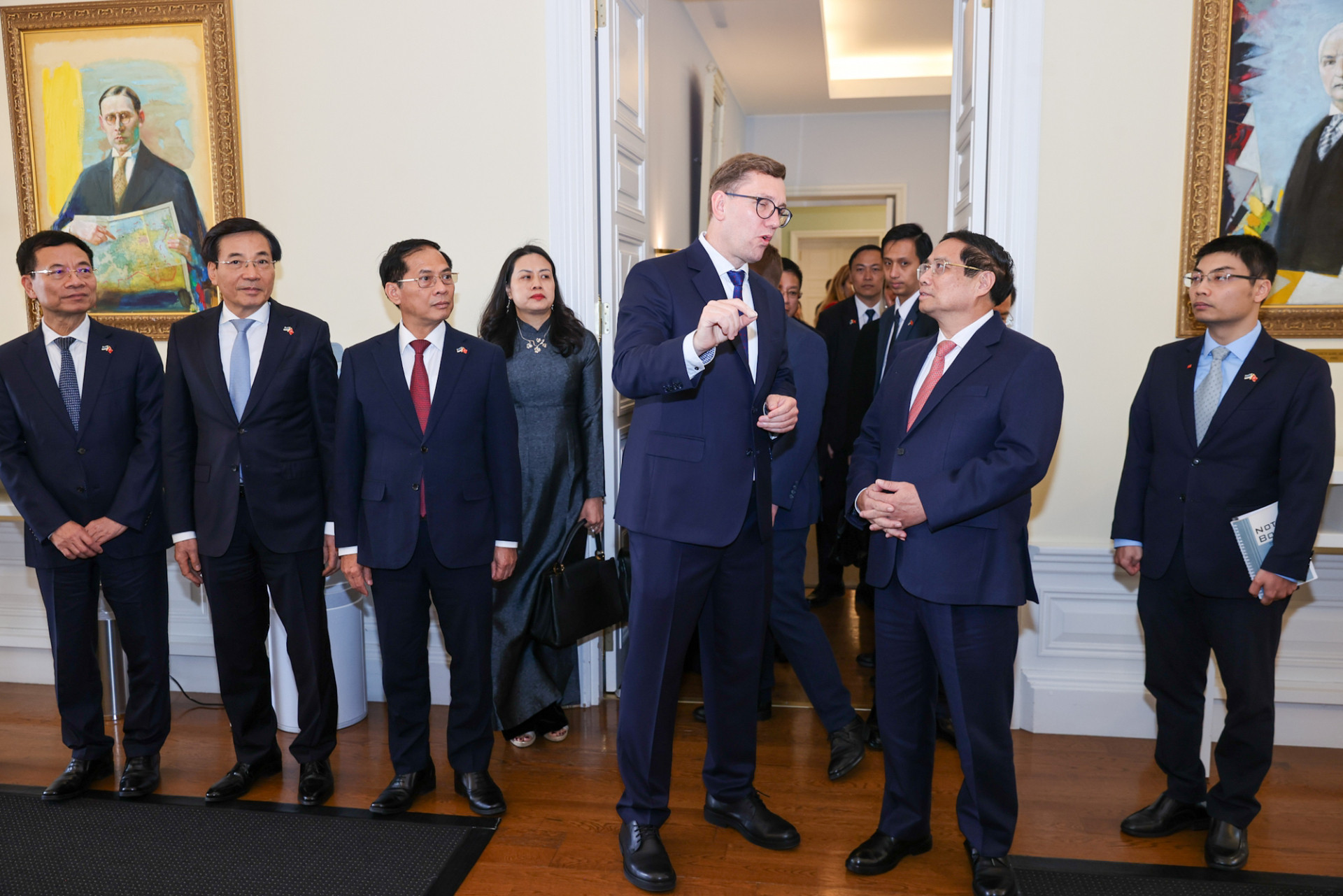


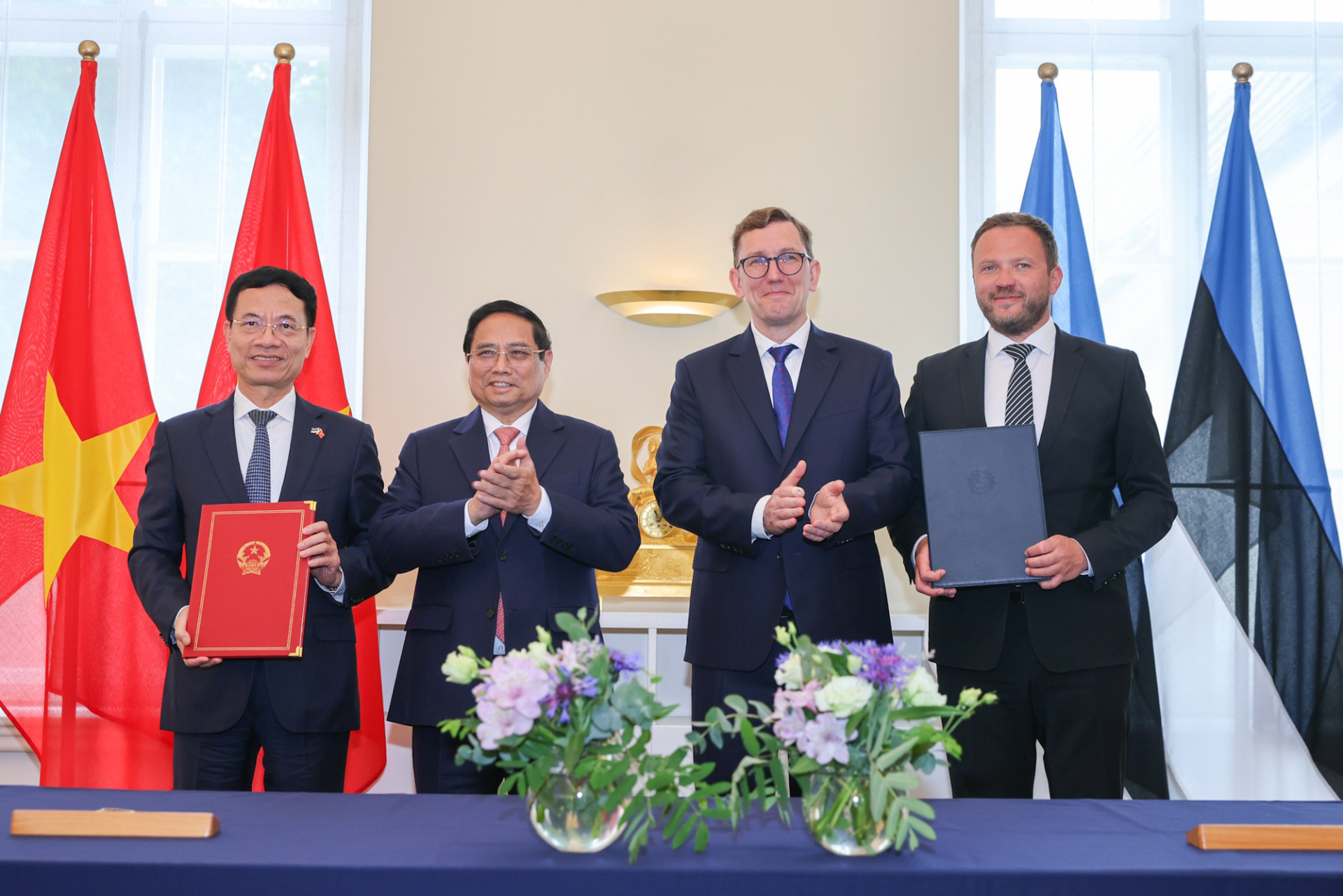
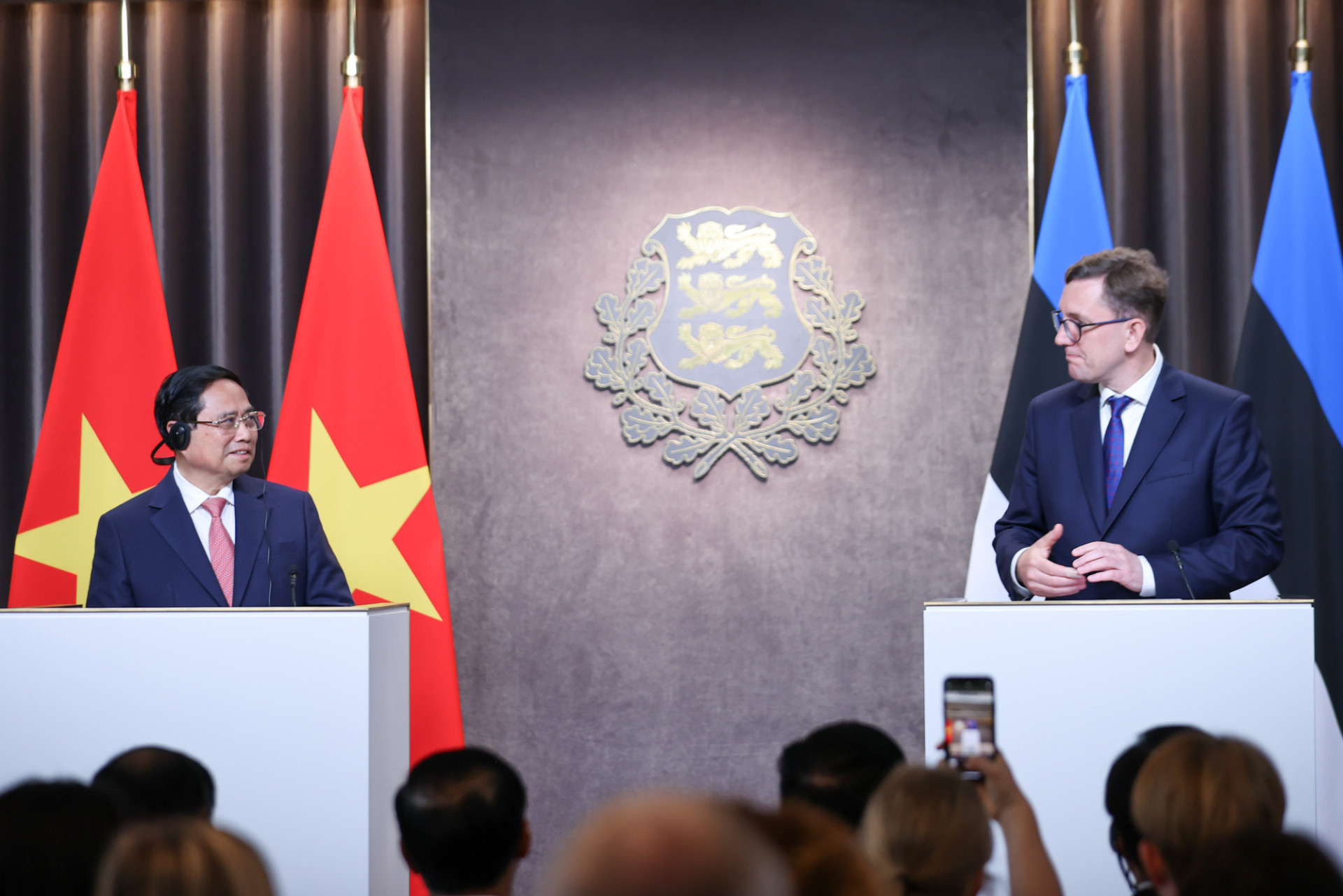
Prime Minister visits world-leading e-Estonia digital center
Earlier that day, Prime Minister Chinh visited the e-Estonia Briefing Centre in Tallinn, a global symbol of digital government transformation.
After gaining independence in 1991, Estonia - a small Baltic country with only 1.3 million people - overcame limited resources by choosing digital transformation as its strategic path. Following its “digital by default” policy, Estonia built a fully digital society.
Founded in 2009, the e-Estonia Centre serves as a hub showcasing Estonia’s digital achievements and vision. It hosts global delegations, consultations, and partnership-building in e-government, infrastructure, cybersecurity, and innovation. The center has helped elevate Estonia's profile as a “smart digital nation,” attracting talent and investment worldwide.
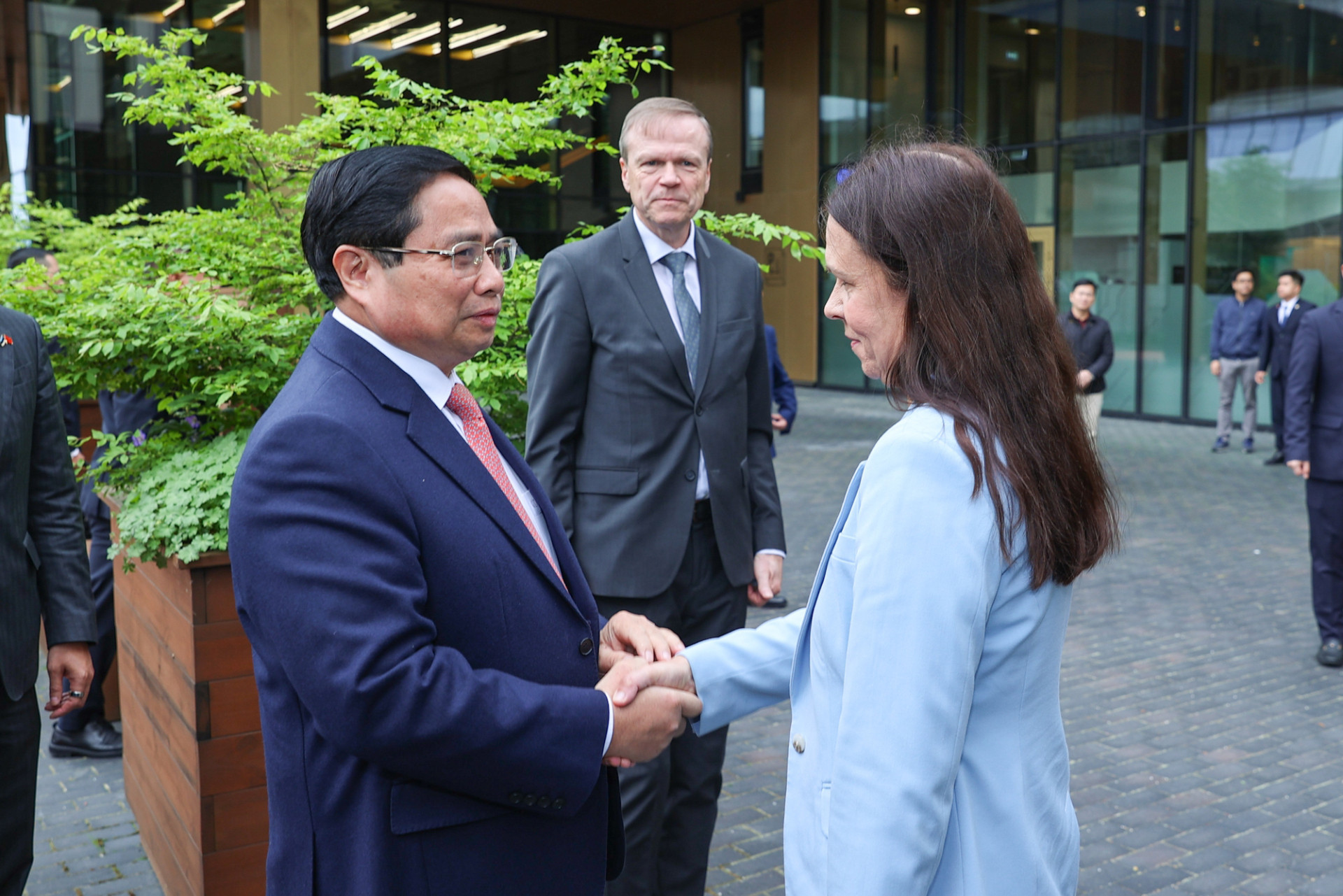
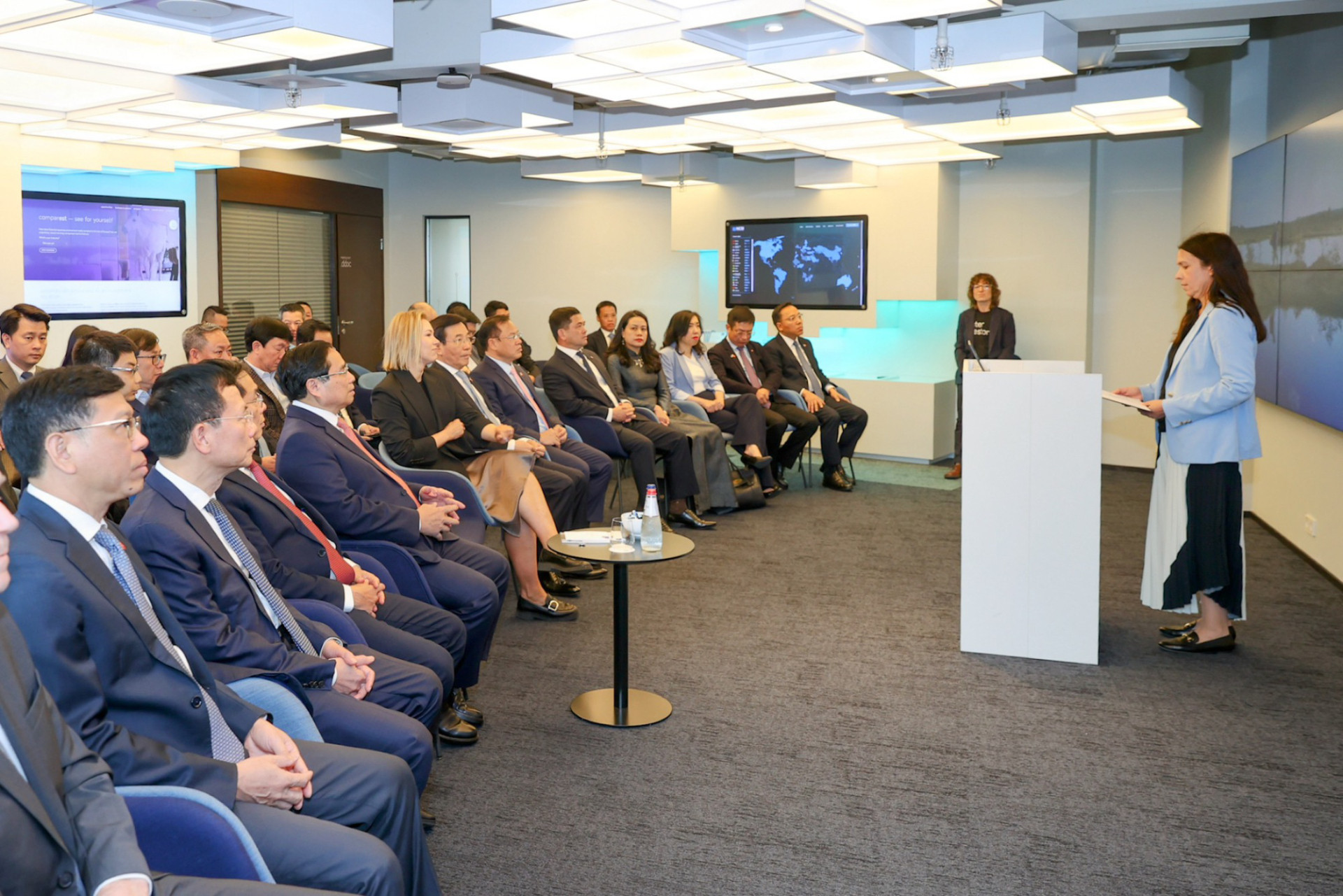
Ms. Triin Joasaare delivers a welcome speech during the Prime Minister’s visit to the center. Photo: VGP/Nhat Bac



The center focuses on key components of Estonia’s model, including digital infrastructure (X-Road), electronic ID (e-ID), online public services, cybersecurity, digital residency (e-Residency), and digital transformation in education, health, and justice.
X-Road, the backbone of Estonia’s digital government, is a decentralized integration platform allowing over 1,000 public and private entities to exchange encrypted data safely and efficiently. Thanks to this system, Estonia delivers nearly all public services online.
Petra Holm, e-Estonia’s Director of Digital Transformation, shared how even tax declarations are popular in Estonia, often completed in just three clicks. She noted that when digitalization began, most Estonians had no computer skills - yet even her 80-year-old grandmother learned digital tools.
To date, delegations from over 150 countries have studied Estonia’s model. Finland and Iceland joined the X-Road system, while South Korea, Japan, and Singapore have sent top-level delegations. The African Union and other developing countries are exploring e-ID and e-Residency systems.
The center plans to strengthen global digital partnerships with organizations such as the OECD, EU, and UNDP.
Prime Minister Chinh and his delegation posed several questions, including how a large country like Vietnam, with 100 million people, can learn from Estonia’s 1.3 million population model. Estonian experts said the tools are scalable - what matters is robust, secure infrastructure and user-friendly applications.
Prime Minister Chinh praised Estonia’s digital vision and proposed further cooperation. The center confirmed its readiness to send a delegation to Vietnam to share expertise and deepen digital collaboration between the two countries.
VGP